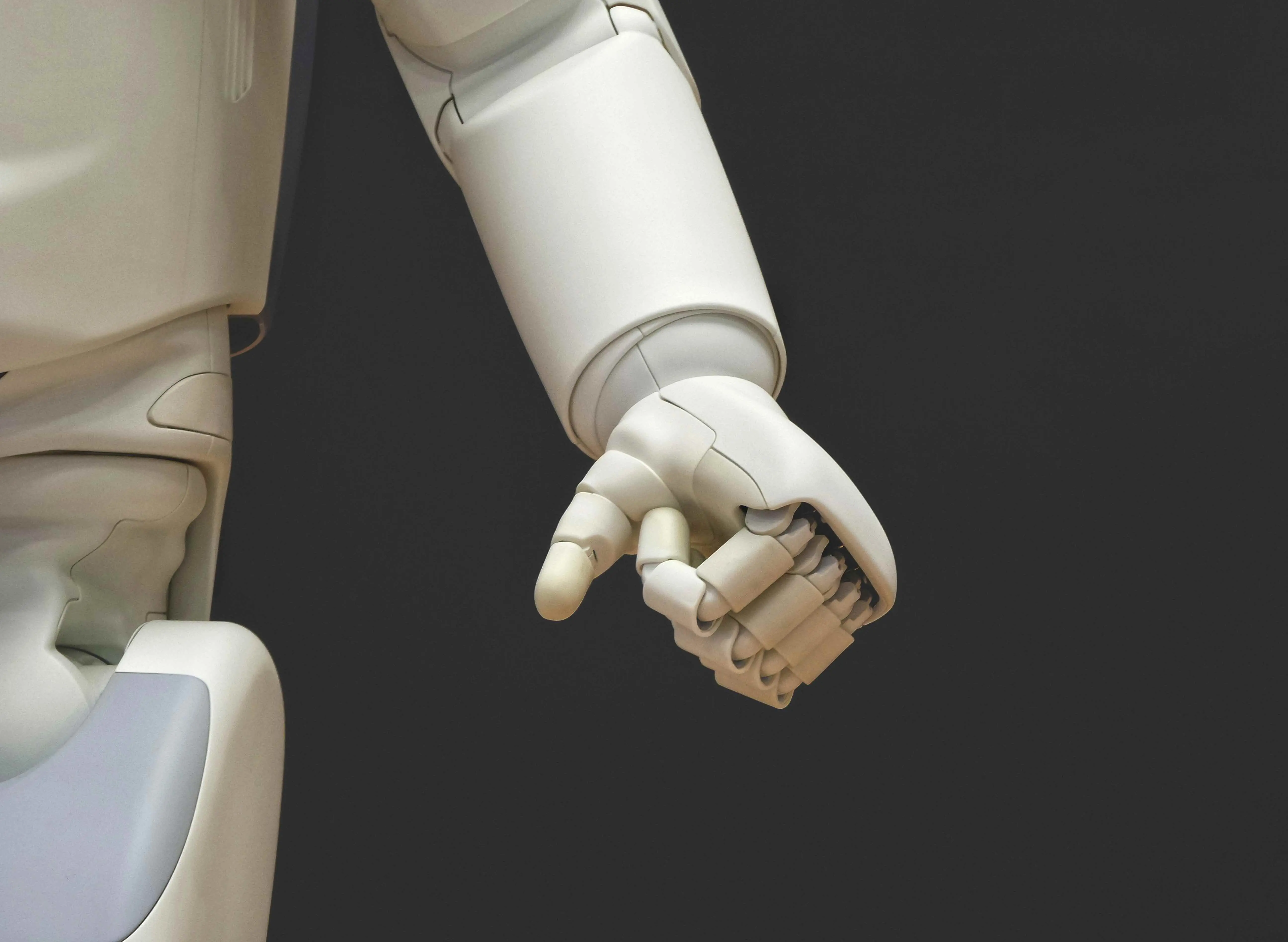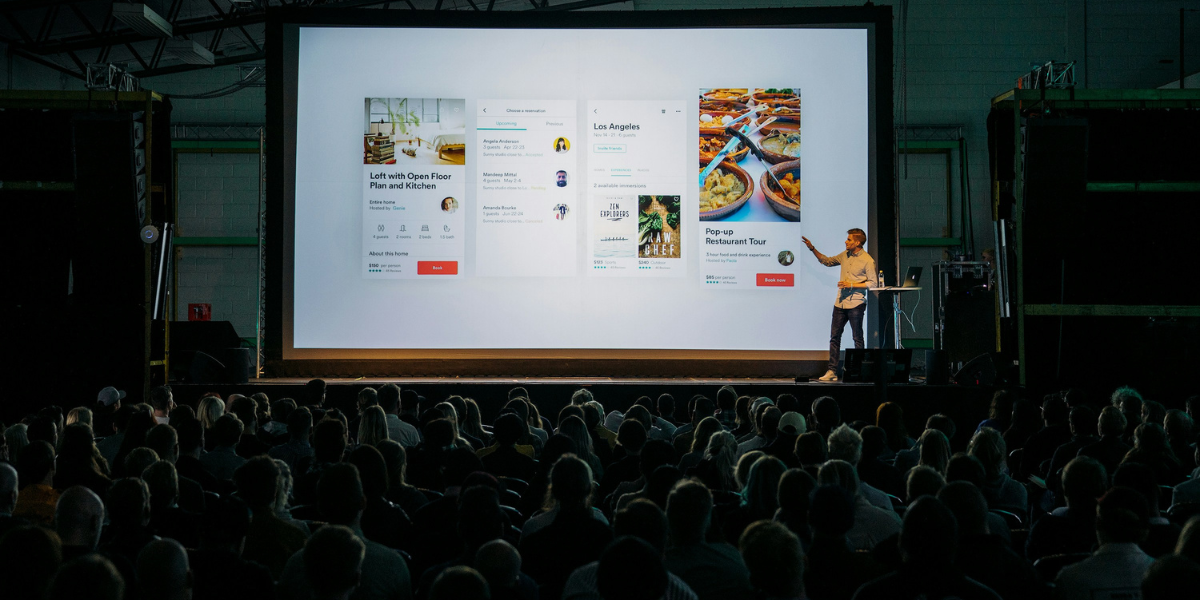the robots are coming
Thinking human-first to maintain authenticity in the age of AI

Something about the way robots are portrayed in the movies makes them both intriguing and a little terrifying. Two of my favourite movies demonstrate this ‘spectrum of scariness’ perfectly. On one end, you’ve got the ‘I’m going to turn you into a battery for my world domination’ AI from The Matrix and the cute, helpful bots from Wall-E on the other. Although, neither case is a particularly fulfilling future for us humans. In reality, though, our interactions with AI are far less dramatic. No one’s waking up in a dystopian future just yet. Instead, we’re faced with a more mundane yet equally significant shift: artificial intelligence is slowly becoming a crucial part of our everyday work, and—let’s face it—it’s not going anywhere.
And that’s fine by me. Let’s clear something up right from the start: I’m not standing in the way of progress with a “Robots = Bad” banner. In fact, I believe AI can (and already does) make our jobs as marketers easier in countless ways. Automated reports, more intelligent ad targeting, faster data analysis—AI has a lot to offer. But here’s the thing: while AI is great for cutting down the time we spend on mundane tasks, we can’t use it as a substitute for what really matters in marketing—human connection.
Think of it this way: remember those brands that resisted the internet revolution back in the late ’90s? No? Exactly. You don’t remember them because they didn’t survive. They ignored the signals of change and got left behind, while the ones who adapted thrived. We’re facing a similar juncture with AI. You only have to scroll through LinkedIn for a few minutes to see countless examples of people bad-mouthing AI and how it could never replace them and their work. This is the wrong approach.
And this is where our philosophy of “human-first” marketing comes in. It’s not about resisting AI—it’s about leading with people. It’s about celebrating your team, connecting authentically with your customers, and creating content that resonates on a human level. As marketing becomes increasingly automated, the brands that succeed will be the ones who keep humanity at the centre of everything they do. But whilst still being really polite and friendly to ChatGPT, just in case. You never know.
why AI isn't the enemy (but isn't always the answer)
Let’s repeat this for the people in the back: AI isn’t the villain in our story. It’s not here to replace us as marketers but to make us better at what we do. It’s like the ultimate team member—efficient, tireless, and good at crunching numbers. It can automate the boring stuff and give us insights we’d otherwise spend hours digging for.But, and it’s a big but, it’s not the answer to everything.
For now, AI lacks what we humans excel at - creativity, empathy, and the ability to build genuine relationships. AI can write copy, but it doesn’t understand what resonates with people. It can schedule posts, but it can’t tell a story that makes someone stop scrolling and think, “Wow, this brand gets me.” That is still very much a human-thang.
This is why adapting is critical. Just like brands that resisted the internet are now relics of the past, the same fate awaits those who resist AI. The trick is to use AI for what it’s good at—data, efficiency, optimisation—while keeping human creativity and connection at the forefront. In this way, we can combine the best of both worlds: the precision of AI with the authenticity only humans can bring.
Dear reader...
Let me break the fourth wall for a moment. My name is Phil and I use ChatGPT. This article is an excellent example of how to use AI without losing original thought and creativity. I told ChatGPT I was writing this and then used the voice feature to ramble like a madman about everything I wanted to touch on. I asked it to organise these disjointed ideas into a structure for a blog post. Do not write the blog post for me, but help structure my ideas and give me a framework from which to work. I think everyone needs to stop pretending they're not using AI. Let's get real.
Lots of Love,
Phil

Defining the “Human-First” Approach in Marketing
When the Giraffe team meets at the office, as you can imagine, we say ‘human-first’ at least once in every two sentences. But what is "human-first" marketing? I’ve had a couple of people assume it’s an anti-technology stance. However, this is far of the mark. In a way, it has nothing to do with AI.
Let’s break it down. Human-first means putting your team, customers, and community at your brand's heart. It means celebrating the individuals who make your business tick—whether through employee advocacy, executives being active on social media or showcasing the real people behind the logo. It’s about showing the world that humans are behind the brand, not just algorithms.
And it doesn’t stop with your team. Human-first is also about making your customers part of the conversation. Whether through personalised content, user-generated content (UGC), or influencer partnerships, the goal is to create marketing that feels like a conversation, not a broadcast. It's about building real, human connections—connections that AI can’t replicate, no matter how sophisticated it gets.
So, while AI might be helping us fine-tune the process, the human touch makes our work resonate. AI is a tool, not a storyteller. And in a world that’s becoming more automated by the day, human-first marketing is what will truly set brands apart.
why human-first marketing is more important than ever in an increasingly automated world
Here’s the paradox: as AI and automation continue to evolve, the brands adopting a more human touch are thriving the most. The more marketing becomes automated, the more we crave genuine connection. And that’s because, fundamentally, people don’t connect with algorithms—they connect with other people.
That’s where human-first marketing shines. When you prioritise people in your strategy—whether by featuring your team on social, amplifying customer voices through UGC, or building influencer relationships—you create a level of authenticity that simply can’t be automated.
Data even backs this up. We’re seeing that campaigns focusing on human content often outperform purely data-driven ones. Consumers are getting savvier—they can spot automation from a mile away (clue – look for overuse of emojis and descriptions of everything as the ‘fill gap’ landscape). They’re increasingly drawn to brands that feel genuine, transparent, and human. The desire for human connection will only deepen as AI becomes more ubiquitous.
The Future of Marketing: Human-First Meets AI
Here’s the paradox: as AI and automation continue to evolve, the brands adopting a more human touch are thriving the most. The more marketing becomes automated, the more we crave genuine connection. And that’s because, fundamentally, people don’t connect with algorithms—they connect with other people.
That’s where human-first marketing shines. When you prioritise people in your strategy—whether by featuring your team on social, amplifying customer voices through UGC, or building influencer relationships—you create a level of authenticity that simply can’t be automated.
Data even backs this up. We’re seeing that campaigns focusing on human content often outperform purely data-driven ones. Consumers are getting savvier—they can spot automation from a mile away (clue – look for overuse of emojis and descriptions of everything as the ‘fill gap’ landscape). They’re increasingly drawn to brands that feel genuine, transparent, and human. The desire for human connection will only deepen as AI becomes more ubiquitous.

P.S. Yes, that's supposed to be me as Neo.
P.P.S. Yes, it was created by ChatGPT.
Final Thoughts: A Call to Action
So, here’s the challenge: as AI continues to change the world, don’t get swept up in the wave of automation for automation’s sake. Think critically about how you can blend AI’s capabilities with a human-first approach to marketing. Yes, use AI to streamline your processes, but don’t let it take over the heart and soul of your brand.
Remember, people don’t want to connect with machines—they want to connect with other people. Your team, your customers, your community—they’re what makes your brand unique. Keep them at the forefront of your strategy, even as you embrace AI's new tools.
As we move forward, the brands that succeed will be the ones that use technology to enhance, not replace, their human touch. The robots are coming, and that’s exciting. But this isn’t a ‘red pill or blue pill’ type decision. As much as I’ve always hoped that I may be the real Neo, the reality is not that dramatic. So, get out there and carefully embrace AI—but don’t forget to stay human-first.





